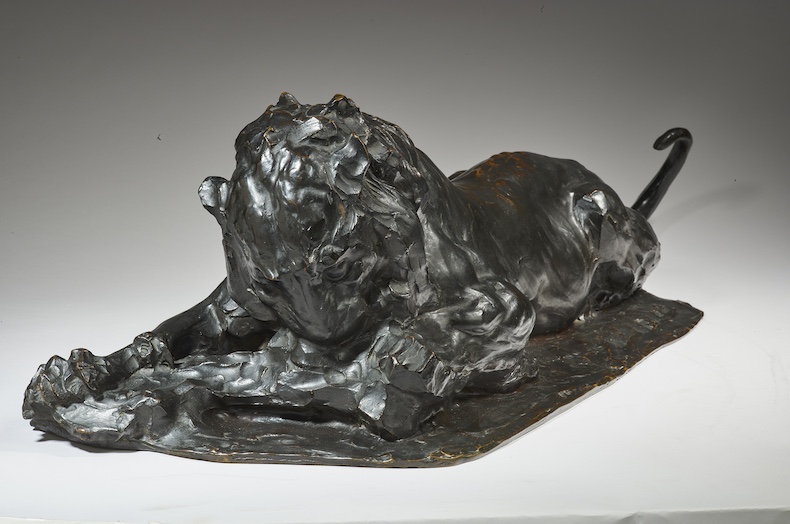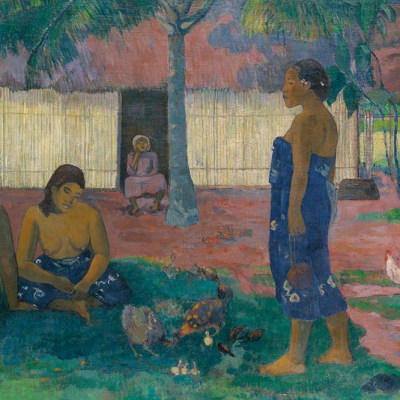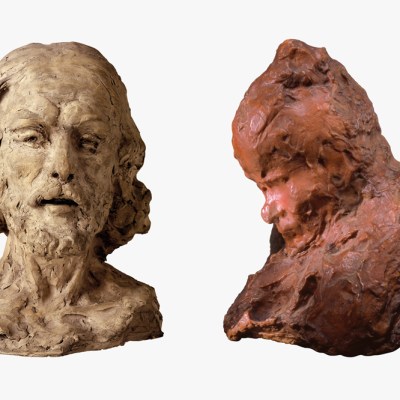A round-up of the most important works of art to have recently entered public collections
Van Gogh Museum, Amsterdam
Clovis Sleeping (1884), Paul Gauguin
Before his relocation to Tahiti in the 1890s saw a shift in his artistic practice and style, Paul Gauguin painted many Impressionist works, including still lifes, portraits and domestic scenes. The Van Gogh Museum in Amsterdam has acquired an exemplary work from Gauguin’s Impressionist phase – a tender painting from 1884 of Gauguin’s five-year-old son, Clovis, resting his head on a large table. Gauguin painted Clovis – and the large Norwegian tankard that stands next to him – from life, but added an ethereal swash of blue covering the top half of the canvas, perhaps to evoke the dream-world inhabited by the sleeping child. The museum does not often acquire works but has, over the last few years, made an effort to strengthen its collection of works by Van Gogh’s contemporaries, including Jean-François Millet, Émile Bernard and Mary Cassatt.
Clovis Sleeping (1884), Paul Gauguin. Van Gogh Museum, Amsterdam

Städel Museum, Frankfurt
Devouring Lion (1908), Rembrandt Bugatti
The Städel is celebrating the 125th birthday of the Städel Museums Association – a patron’s group that supports several museums in Frankfurt – by adding to its impressive collection of European art from the 14th century to the 21st. Its latest acquisition is a bronze by the Italian sculptor Rembrandt Bugatti of a lion devouring its prey, claws bared and tail aloft in a striking pose. Bugatti was fascinated by animals and a large proportion of his 300-odd extant works were inspired by them: he spent time modelling sculptures in the menagerie of the Jardin des Plantes in Paris and in the zoological garden of Antwerp. He took up a job as an assistant at a military hospital, spending much of his time observing animals at Antwerp Zoo during the First World War before dying by suicide in 1916 at the age of 31. Devouring Lion comes from the collection of the French actor Alain Delon, who owns a large private collection of works by Bugatti, and was bought with the support of the Association and a substantial private donation. It becomes only the second Bugatti sculpture housed in public collections in Germany, the other being a sinister bronze of a stalking panther from 1904 that is owned by the Alte Nationalgalerie in Berlin.
Devouring Lion (1908), Rembrandt Bugatti. Städel Museum, Frankfurt. Photo: Bonhams Cornette de Saint Cyr

Kimbell Art Museum, Fort Worth
Mares and Foals Belonging to the Second Viscount Bolingbroke (c. 1761–62), George Stubbs
This year marks the tercentenary of the birth of George Stubbs, the 18th century’s pre-eminent painter of horses. The Kimbell Art Museum has now bought a large canvas by Stubbs, depicting a group of brown horses belonging to the second Viscount Bolingbroke, painted around the same time as Whistlejacket (c. 1762), the huge, arresting portrait of the Marquess of Rockingham’s racehorse which is arguably Stubbs’s most celebrated work. This painting, which was bought from a private collection through the London-based dealer Simon Dickinson for an undisclosed price, will join another work by Stubbs in the Kimbell’s collection, Lord Grosvenor’s Arabian Stallion with a Groom (c. 1765).
Mares and Foals Belonging to the Second Viscount Bolingbroke (c. 1761–62), George Stubbs. Kimbell Art Museum, Fort Worth

Metropolitan Museum of Art, New York
The Banishment of Hagar (1839–41), Johann Freidrich Overbeck
In the early 19th-century, a group of graduates from the Academy of Fine Arts in Vienna living in Rome banded together, united by a distaste towards the ubiquity of neoclassical art, and founded the Nazarene movement, which aimed to put spirituality back at the centre of culture and to restore a clarity of form that they perceived as having vanished from art since the Renaissance. The most significant of these students was Johann Friedrich Overbeck, a German-born painter whose magnum opus, The Triumph of Religion in the Arts (1829–40), is a programmatic demonstration of his philosophy – a large painting 11 years in the making that depicts a conclave of saints, biblical figures and artists admired by Overbeck, from Peter the Apostle and Thomas Aquinas to Michelangelo and Dürer. The Met already has several drawings by Overbeck but has now acquired an evocative oil painting, produced after the completion of Triumph, which depicts the banishment of the slave Hagar and her son Ishmael by Sarah and Abraham.
The Banishment of Hagar (1839–41), Johann Freidrich Overbeck. Metropolitan Museum of Art, New York

Tate Britain, London
Portrait of Anne Sotheby (1676–77), Mary Beale
There has been growing interest over the last few years in the work of Mary Beale, who was one of the leading portrait artists of her day but fell out of favour in the centuries after her death. Earlier this year the Museum of Fine Arts in Boston bought her portrait of the Marchioness of Halifax; now Tate Britain have acquired a portrait of Anne Sotheby, painted in 1676–77 by Beale with help from her son Charles, who worked in her studio. The painting, which shows the subject clad in flowing gold and blue in a woodland setting, is currently on display in the exhibition ‘Now You See Us: Women Artists in Britain 1520–1920’ (until 13 October).
Anne Sotheby (1876-77), Mary Beale. Photo: © Tate/Joe Humphrys

Musée Ingres Bourdelle, Montauban
Study for the Christ Child in The Vow of Louis XIII in Montauban Cathedral (c. 1824), Jean-Auguste-Dominique Ingres
The cathedral in Montauban in the south of France contains one of the greatest works by the town’s native son Jean-Auguste-Dominique Ingres, The Vow of Louis XIII (1824), an elaborate neoclassical oil painting that shows the French king offering a pledge to the Virgin Mary. The Musée Ingres Bourdelle, dedicated to Ingres and another Montauban-born artist, the sculptor Antoine Bourdelle, has now acquired a study for that work. This depiction of the Christ Child, who in The Vow is being held by Mary, features a pose almost identical to that in the finished piece – with slight adjustments to the angle of the baby’s head and legs, the arrangement of his hands and the colour palette.
Study for the Christ Child of The Vow of Louis XIII in Montauban Cathedral (c. 1821), Jean-Auguste-Dominique Ingres. Musée Ingres Bourdelle, Montauban

Museum of Fine Arts, Budapest
Still Life with Fruit (c. 1640), Juan de Zurbarán
The Spanish Baroque painter Juan de Zurbarán, son of the more famous Francisco de Zurbarán, died of plague in 1649 at the age of just 29. There are only some 20 extant works by the artist – all still lifes, mostly depicting fruit – so this acquisition of his Still Life with Fruit (c. 1640) by the Museum of Fine Arts in Budapest, which already holds a significant body of work by Spanish Old Masters, including Velázquez, El Greco and Goya, is a rare occurrence. This particular painting, which shows two bowls piled with fruit and four grapes strewn on a table, is a less elaborate affair than, for example, his Still Life with Lemons in a Wicker Basket (c. 1643–49) in the National Gallery in London, but it does have the characteristically skilled brushwork and almost photo-realist attention to detail that makes Zurbarán’s works such renowned examples of the genre.
Goa State Museum, Panaji
Three sculptures from the Shri Shivnath temple
Goa State Museum has acquired three sculptures that were uncovered during construction works at the Shri Shivnath temple in the village of Shiroda, Goa: a sculpture of Gajalakshmi (one of the manifestations of the Hindu goddess of prosperity, Lakshmi) seated on an elephant pedestal; a statue of Nandi, the sacred bull of Shiva; and a Shivling statue, a representation of Shiva himself. The pieces, which were given to the museum by the temple authorities, are in the process of being carbon dated and forensically analysed to help establish their exact provenance.


